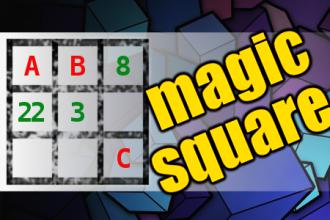MAGIC SQUARE: Calculate A-B*C
The aim is to place the some numbers from the list (3, 4, 8, 17, 18, 22, 44, 58, 59, 63) into the empty squares and squares marked with A, B an C. Sum of each row and column should be equal. All the numbers of the magic square must be different. Find values for A, B, and C. Solution is A-B*C.Correct answers: 17
The first user who solved this task is Nasrin 24 T.
#brainteasers #math #magicsquare


